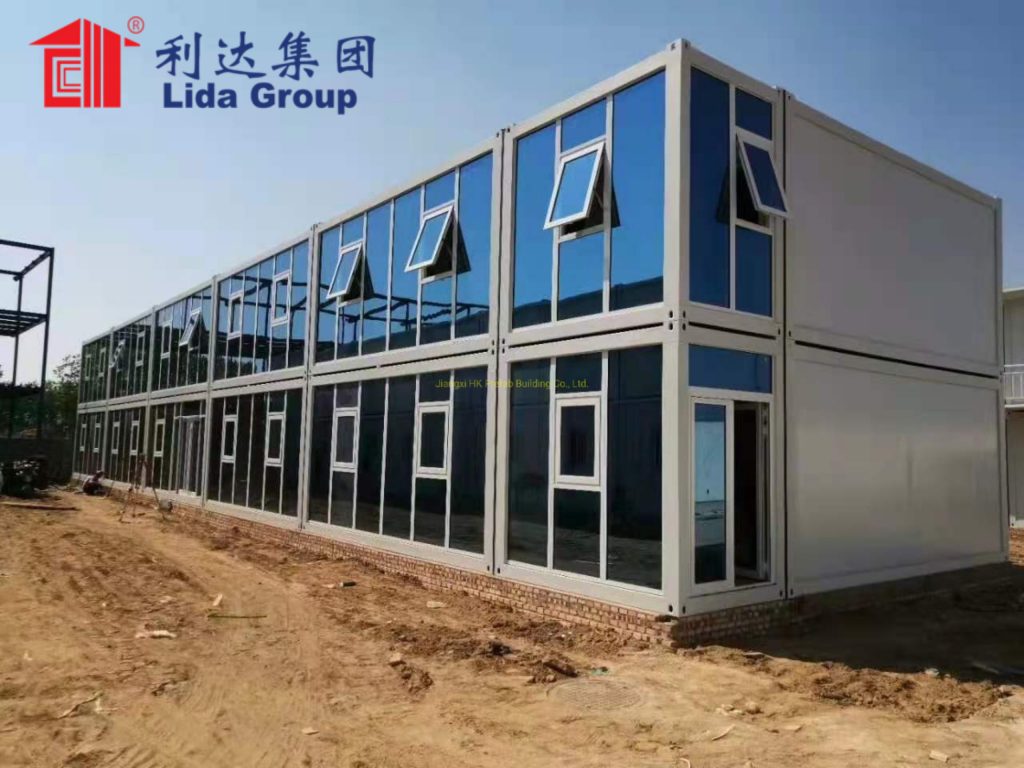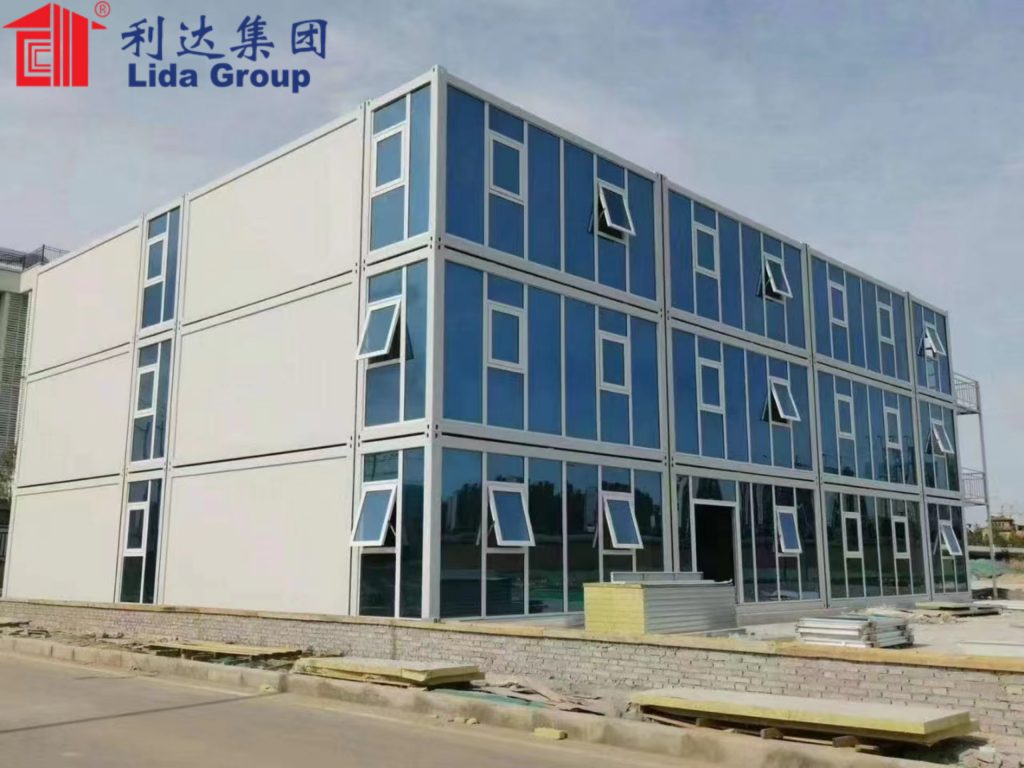As construction firms explore innovative uses for surplus shipping containers, Qingdao-based Lida Group has proposed a unique system for constructing affordable modular homes capable of withstanding the hazardous conditions found in remote areas prone to natural disasters. Their design envisions stacking steel containers to form multi-room dwellings that can be rapidly deployed where conventional housing is impractical or too expensive. However, before licensing their system internationally, engineers have undertaken rigorous analysis to validate the structural integrity and durability of the container homes under demanding seismic and wind loads they may encounter in target locations.
Lida Group developed their modular housing concept as an alternative for rebuilding communities after disasters or providing temporary shelters that can later be relocated. Standardized steel shipping containers form the basic building blocks, with multiple containers welded together and stacked to assemble single-family houses or multi-unit buildings in a factory setting. This approach aims to significantly reduce on-site construction time and costs compared to traditional stick-built methods. But for the modular homes to be a viable long-term solution in remote regions subject to earthquakes, typhoons, or hurricanes, engineers needed to model and test their structural performance under such extreme dynamic loads.
A key component of the engineering evaluation involved finite element analysis of the container homes’ steel frame structures. Computer simulations modeled various stack configurations proposed by Lida Group under different loading scenarios, such as horizontal forces from seismic activity or high-velocity winds. Parameters like wall thickness, connection methods, and reinforcement techniques were altered in the virtual models to gauge their impact on the structures’ ability to withstand the intense stresses and flexing motions. Initial simulations helped iteratively improve joint designs so welding of stacked containers transfers loads more effectively throughout the frames.

In addition to computational modeling, engineers conducted physical testing on sample joints and structural components using specialized equipment. Hydraulic actuators applied cyclic horizontal and vertical forces simulating seismic shear and overturning loads to scaled joint samples under increasing intensity. Displacement transducers and strain gauges recorded how the prototypes deformed and where stresses accumulated with each loading cycle. Analysis of the test data helped verify joint details could withstand the repetitive flexing and absorb energy without catastrophic failure as damping increased.
Full-scale prototype modules also underwent controlled shaking table experiments representing a range of seismic hazard levels. Containers were welded together following finalized joint details and instrumented with sensors before being anchored to the massive shaking platform. Earthquake simulations incrementally ratcheted up the table’s sinusoidal vibrations subjecting the prototypes to higher acceleration amplitudes. Monitoring data confirmed the steel frames effectively transmitted inertia forces throughout without structural damage even under the most intense shaking simulating major seismic events.
In parallel wind tunnel testing, scale models of proposed single-family and multi-unit housing designs underwent aerodynamic evaluation. Models suspended in the wind tunnel represented standard container dimensions but with simplified external cladding. Sensors tracked deformation and pressures as steady wind speeds ramped up well over design code requirements. Additional tests varied parameters like roof shape, wall openings, and nearby building geometries to gauge their aerodynamic interaction effects. Results helped finalize housing designs demonstrating sufficient strength and stability margins for withstanding extreme typhoon-force winds.

Once computational, shake table, and wind tunnel analyses validated the structural concepts could safely withstand targeted hazardous loading conditions, full-scale static load tests followed. Prototype housing modules constructed on-site utilized finalized joint details and structural connections. Hydraulically-actuated jacks steadily applied equivalent static forces simulating gravity, wind, and seismic loads to the house envelopes. Displacement was precisely monitored and compared to design expectations without any yielding, cracking, or connection failures observed even under maximum rated loads.
With multi-faceted engineering evaluation complete, independent experts attested the modular container housing system achieved the stringent performance criteria necessary for withstanding the dynamic environmental threats characteristic of remote regions targeted for deployment. Though using non-traditional construction, finite element modeling, physical testing, and full-scale prototypes proved the conceptual designs structurally sound and durable enough for withstanding predicted seismic events and typhoon conditions without collapsing or serious damage to occupants.
Armed with validated engineering analysis, Lida Group aims to finalize regulatory approval and begin production and marketing of their modular housing system internationally next year. Initial focus regions include disaster-prone areas of Southeast Asia and the Pacific Rim where conventional construction faces challenges. If adopted, the rapid deployment and durable steel structures could provide much-needed temporary or permanent housing. Overall the comprehensive testing gave engineers high confidence displaced communities or remote settlements could reliably utilize standardized container modules as wind- and earthquake-resistant shelter.
While still early in development, the evaluation of Lida Group’s steel shipping container housing suggests modular prefabrication could expand options for affordable construction in remote, hazardous locations currently underserved. By leveraging standardized containers’ proven durability and adapting innovative joint details validated through rigorous testing, the conceptual system demonstrates potential for adaptively meeting shelter needs where conventional methods falter. With validation complete paving the way for regulatory approvals, widespread utilization of the container modules could help address shortfalls after natural disasters or for permanent settlements isolated from traditional infrastructure networks. Though an emerging approach, thorough multi-disciplinary engineering analysis established a foundation for the innovative container home system to reliably shelter communities facing the most extreme weather threats.
In summary, engineers conducted comprehensive analysis to validate Lida Group’s proposed modular steel shipping container housing designs can withstand the dynamic seismic and wind loads characteristic of developing remote regions prone to natural disasters. Computational modeling, physical component testing, full-scale shake table experiments, and aerodynamic wind tunnel evaluations systematically proved the conceptual structural system achieves stringent performance criteria for safely sheltering occupants even under predicted extreme hazardous conditions without collapse or serious damage. The multi-faceted engineering evaluation establishes these standardized container module homes as a structurally sound innovative construction approach expanding viable options for reliably housing communities isolated from conventional infrastructure networks or after major natural disasters.

Related news
-
City Approves Lida Group Project to Construct Temporary Supportive Housing Community of 100 Prefab Apartments Assembled within Modular Steel Shipping Containers
2023-12-20 17:39:29
-
Fire Destroys Prototype of Lida Group's Design for Multi-Story Apartment Building Utilizing Stacked Steel Shipping Containers as Structural Cassettes
2023-12-20 17:43:00
-
Lida Group Unveils Plans to Engineer Standardized Steel Container Modules into Multifamily Developments Affordable for Low-Income Communities
2023-12-20 17:23:25
contact us
- Tel: +86-532-88966982
- Whatsapp: +86-13793209022
- E-mail: sales@lidajituan.com


